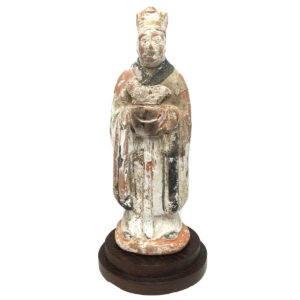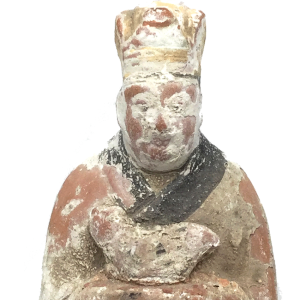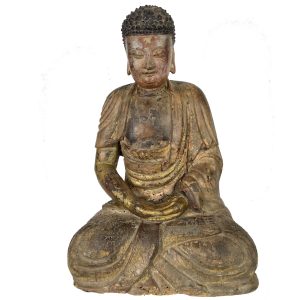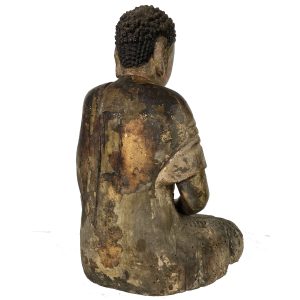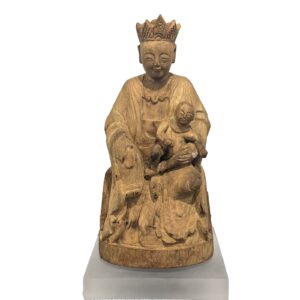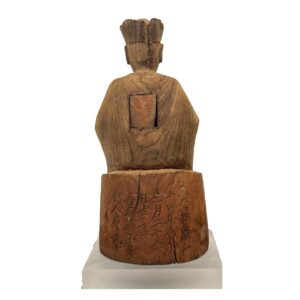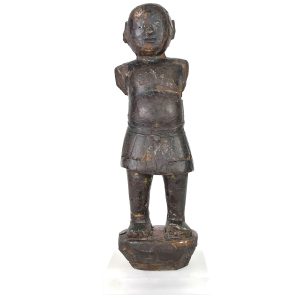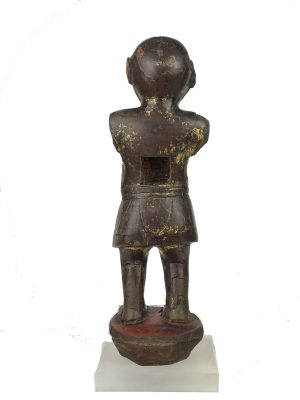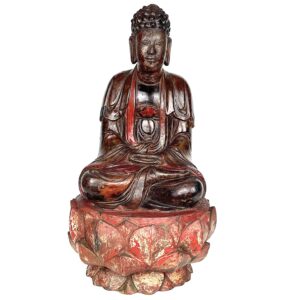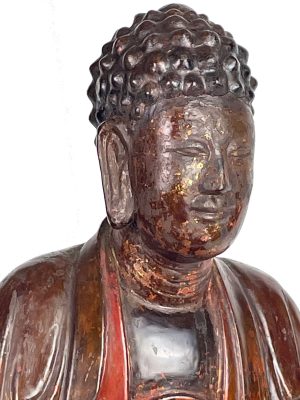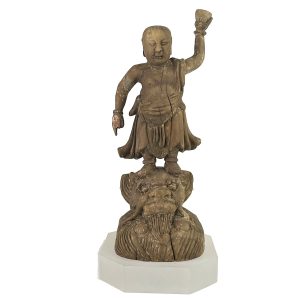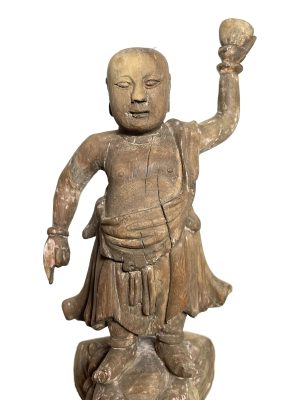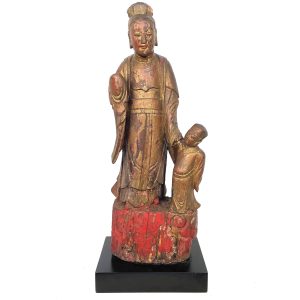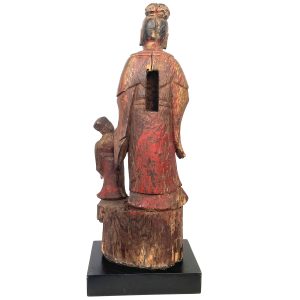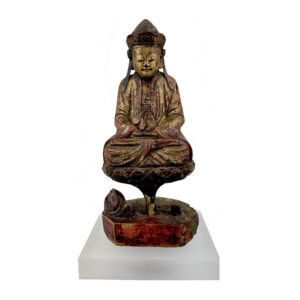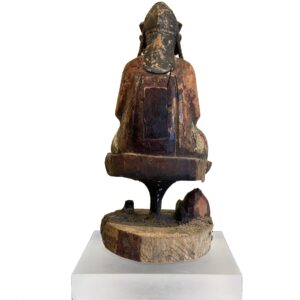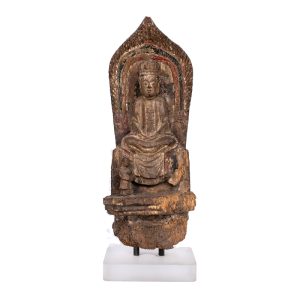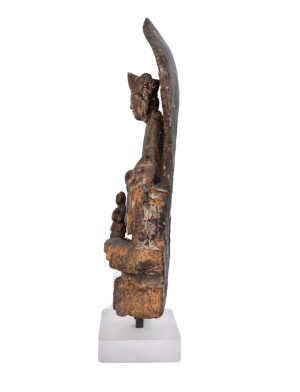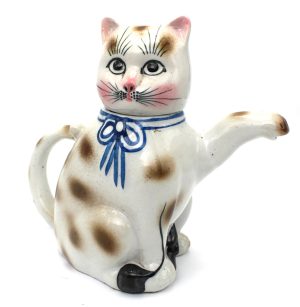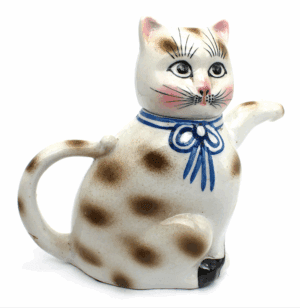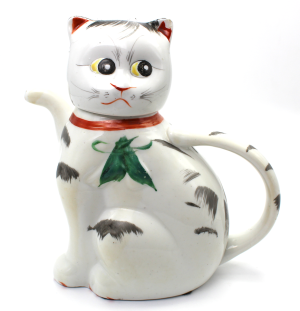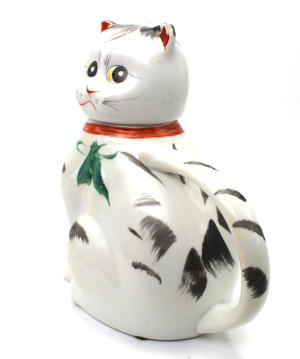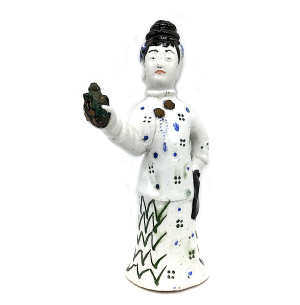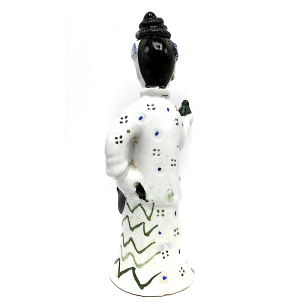Showing 133–144 of 204 results
-
Sale!


$395.00 Original price was: $395.00.$295.00Current price is: $295.00.
H: 3.375″ W: 2.75″ D: 2.5″ | FREE SHIPPING WITHIN CONTINENTAL U.S.
One of a set of 12 Zodiac attendant figures holding a small calendar animal of the year represented as part of mingqi placed in the graves of deceased.
-
Sale!


$3,200.00 Original price was: $3,200.00.$2,300.00Current price is: $2,300.00.
H: 14” W: 9.375” D: 7.25” | FOR SHIPPING INFORMATION CONTACT US AT 213-568-3030
Rare small yet majestic carving of the Buddha in meditation with gracefully draped robes and beautifully idealized features that radiates serenity, compassion and spirituality. A truly magnificent piece.
-
Sale!


$1,350.00 Original price was: $1,350.00.$1,100.00Current price is: $1,100.00.
H: 11” W: 5.75” D: 5.125” | FREE SHIPPING WITHIN CONTINENTAL U.S.
Very rare and fine 16th century home shrine image with compassionate countenance of Songzi Guanyin the “Bestower of Children.” With joyful half-closed eyes, she looks lovingly at the child whose arm is draped over hers.and leans slightly forward.Wearing a 5- lobed crown centered with a camellia flower a Chinese symbol of young sons and daughters. Inscription dates it to 1521-1567
-
Sale!


$985.00 Original price was: $985.00.$650.00Current price is: $650.00.
H: 17.5 W: 6” D: 5” | FOR SHIPPING Call 213-568-3030 or email [email protected]
Although this rare Ming image is missing its arms, it is a powerful yet charming sculpture of the infant Buddha as humble and confident with a youthful torso.
-
Sale!


$3,750.00 Original price was: $3,750.00.$2,985.00Current price is: $2,985.00.
H:18.75“ W: 9.75″ D: 9″ | CALL 213-568-3030 OR EMAIL [email protected] FOR SHIPPING.
Magnificent rare Ming Buddha covered with dark lacquer, indications of gold and red pigmentation. Seated in meditation on an elaborate lotus throne, this rare masterpiece would enhance any environment with its spiritual energy and beauty.
-
Sale!


$750.00 Original price was: $750.00.$575.00Current price is: $575.00.
H: 9″ W: 3.625″ D: 3.5″ | FREE SHIPPING IN CONTINENTAL U.S.
Ming provincial infant Buddha holding monk’s begging bowl, pointing to heavens standing on a lion’s head symbolizing the Shakya clan and the lion’s roar of Buddhism. Buddha images seldom placed in homes and blended iconography as an infant, is extremely rare.
-
Sale!


$2,250.00 Original price was: $2,250.00.$1,800.00Current price is: $1,800.00.
Ht: 26” W: 10.25” D: 7.5″ |CALL 213-568-3030 OR EMAIL [email protected] FOR SHIPPING
Rare provincial image of Guanyin tenderly holding a young child’s hand similar to Songzi “Child-Giving Guanyin”. Consecrated with vibrant gilt and red surface in front and back.
-
Sale!


$695.00 Original price was: $695.00.$525.00Current price is: $525.00.
H: 10″ W: 5.5″ D: 4.5″ | FREE SHIPPING WITHIN CONTINENTAL U.S.
Rare provincial consecrated carving of Nanhai Guanyin on a lotus, representing purity of the mind, above a fish symbolizing her power to help beings sail through sea of suffering separating mortal world from the Western Paradise.
-
Sale!


$775.00 Original price was: $775.00.$625.00Current price is: $625.00.
H: 22.75″ W: 7.25″ D: 5″ | CALL 213-568-3030 OR EMAIL [email protected] FOR SHIPPING
Carved from one piece of wood, triad depicts Nanhai Guanyin and 2 acolytes (one deteriorated) , crown centered with Amitabha Buddha in meditation bordered by flames of Buddhism.
-
Sale!


$145.00 Original price was: $145.00.$125.00Current price is: $125.00.
H: 7” W: 8” D: 3.625” | FREE SHIPPING WITHIN CONTINENTAL U.S.
Unique rotund teapot of cat protectively sitting on a mouse. Raised paw spout, removable head and sinuous tail handle. Blue collar ribbon with bow symbolize long life. Black, pink, brown accents on face, ears, head, paws and body.
-
Sale!


$145.00 Original price was: $145.00.$125.00Current price is: $125.00.
H: 8” W: 8” D: 3.75” | FREE SHIPPING WITHIN CONTINENTAL U.S.!
This charming vintage porcelain cat teapot with raised paw for pouring tea, removable head and a sinuous tail handle is whimsical and colorful with a red ribbon collar, green bow and green, black and red accents defining the expressive face, ears, head and paws, all beautifully hand-painted.
-
Sale!


$265.00 Original price was: $265.00.$165.00Current price is: $165.00.
Ht: 8.5” W: 5” D: 3” | FREE SHIPPING WITHIN CONTINENTAL U.S.
This small charming Qing or early Chinese Republic teapot is an attendant, her right arm is the spout and the left is handle and her with flowers is a removable lid . She typical attendant clothing, a high mandarin collared jacket draped over a flaring skirt that is the piece’s base.
End of content
End of content

